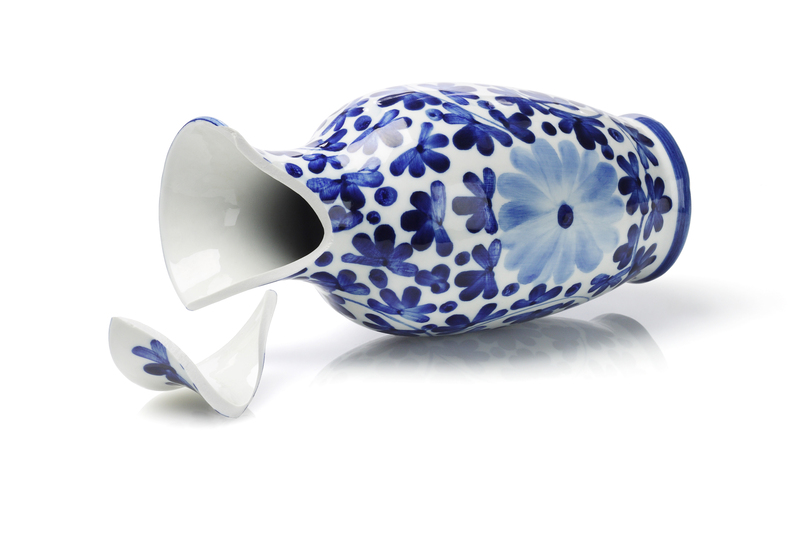Proper Freezer Storage Techniques for When It's Idle
Posted on 22/05/2025
Proper Freezer Storage Techniques for When It's Idle
Your freezer is a valuable household appliance, keeping food fresh, reducing waste, and offering convenience. But what happens when your freezer sits idle for extended periods--maybe during a vacation, a relocation, seasonal downsizing, or simply because it's not in regular use? Improper idle freezer storage can swiftly lead to odor buildup, mold, appliance wear, and even damage. This comprehensive guide offers you the most effective and proper freezer storage techniques for when it's idle, so you can extend your appliance's life, avoid unexpected surprises, and keep it functioning at its best.
Why Proper Freezer Storage During Idle Periods Matters
Many homeowners believe that simply unplugging the freezer or leaving it closed is sufficient. Unfortunately, this method can do more harm than good. Mold, mildew, unpleasant odors, and even mechanical issues can arise quickly when a freezer is neglected. Practicing the right idle freezer management techniques ensures your appliance will be ready and fresh for use when you need it again, helps maintain food safety standards, and prevents unexpected repair costs.
The Risks of Neglecting Your Idle Freezer
- Mold and Mildew: Dark, damp interiors breed these health hazards, especially if any moisture or food residue is left.
- Odor Buildup: Even trace residues can cause persistent, foul odors over time.
- Mechanical Deterioration: Internal parts can seize or degrade if left unused in poor conditions.
- Pest Attraction: Unattended food particles can attract pests.
- Energy Waste: A running, empty freezer increases energy consumption without serving its actual purpose.

Step-By-Step Guide: Proper Freezer Care When Not in Use
1. Unplug and Defrost Thoroughly
The first critical step in preparing your freezer for idle storage is to unplug the appliance. Never leave your freezer plugged in and running when not in use if you want it to rest safely.
Here's how to defrost it properly:
- Remove all food items and store them in another freezer or cooler.
- Switch off and unplug the freezer. Never attempt defrosting while it's plugged in.
- Open the door and allow all ice to melt naturally.
- To speed up the process, place towels to absorb water or use shallow pans to catch runoff.
- Avoid using sharp objects to chip away ice--this can damage the interior.
Bonus Tip: To absorb extra moisture, you can place bowls of baking soda inside during thawing.
2. Deep Clean and Dry
After defrosting, it's time to thoroughly clean your freezer. Food spills and residual odors can linger if not tackled head-on. A pristine interior prevents mold, keeps odors at bay, and ensures a fresh restart later.
- Wipe all surfaces, including walls, racks, and baskets, with a solution of warm water and mild dish soap.
- Stubborn smells? Mix baking soda with water or use a vinegar solution (1 part vinegar, 2 parts water) for odor removal.
- Don't forget seals, corners, and drainage plugs where spills like to hide.
- Crucially: Dry every nook and cranny with a soft, absorbent cloth. Any leftover moisture encourages mold growth.
3. Air It Out--Keep That Door Open!
Never seal up your unused freezer. Closing the door traps moisture and accelerates mold growth. Instead, prop the door open slightly--just an inch or two is plenty.
- Insert a rolled-up towel or block of wood to keep the door ajar.
- This allows continuous airflow, eliminating musty odors and moisture buildup.
4. Place Odor Absorbers or Moisture Control Devices Inside
Enhance your results by deploying one or more natural odor absorbers:
- Baking soda boxes: Cheap and highly effective for neutralizing scents.
- Activated charcoal: Excellent at absorbing both odors and moisture.
- Silica gel packs: Collects lingering humidity, staving off mold growth.
Replace these absorbers periodically if your freezer will be idle for longer than a few weeks.
Special Scenarios: Freezer Storage During Moves and Long-Term Idle Periods
Freezer Preparation for Moving
When transporting your freezer, always defrost, clean, and dry it first as detailed above. Here are extra pointers for safe and proper freezer storage during moves:
- Secure all removable shelves and drawers.
- Wrap doors closed with bungee cords, but don't seal airtight if being stored for a prolonged period.
- Store upright to prevent compressor fluid overflow and internal damage.
Idle Storage in Humid Climates
Moisture control becomes even more important in humid regions. Consider periodic inspections to ensure there's no condensation, especially in garages or basements. Adding extra silica gel packs and ensuring ventilation is vital.
Freezer Storage During Seasonal Downtime
If you only use your second freezer during holidays or peak produce months, follow the full cleaning and unplugging routine after each main use. Between seasons, consider:
- Placing the freezer on a slightly raised platform to avoid water damage during storms or spills.
- Protecting the plug with a bag to keep out dust and pests.
Preventative Maintenance Tips for Your Idle Freezer
Proper idle freezer storage isn't just about cleaning--it's also about simple maintenance to ensure smooth operation once you put it back into service.
- Periodically check the appliance for dust and pests, especially if stored in a basement, garage, or shed.
- Lubricate door seals lightly with food-safe petroleum jelly to keep them supple and prevent cracking.
- Inspect the cord and plug for any damage before reconnecting to power.
- Wipe the exterior to prevent rust and keep the appearance spotless.
Storing a Freezer With the Power On (But Idle)
In some cases, you may wish to leave your freezer plugged in--especially for larger chest freezers that are hard to move or if you prefer them ice-cold and ready at a moment's notice. Here's how to do this safely:
- Leave a small amount of water in a pan to help moderate the cold, and check periodically for ice accumulation.
- Place non-food items (like filled milk jugs with water) to help regulate internal temperature and prevent overworking the compressor.
- Still use odor absorbers and inspect the appliance monthly.
- Keep temperature settings at the manufacturer's recommended minimum to conserve energy.
Common Mistakes to Avoid in Idle Freezer Storage
Even the best intentions can go awry without the right knowledge. Watch out for these common idle freezer storage errors:
- Never leave food inside. Any perishables will spoil, leak, and invite pests.
- Don't forget to prop the door open if unplugged. Closed, moist interiors are mold magnets.
- Never neglect cleaning and drying before storage. Invisible crumbs or droplets start problems fast.
- Don't store in direct sunlight or near heat sources. Excessive temperatures can warp plastic and tax seals.
- Never ignore regular checks. Even idle freezers need a glance every month or two.
Frequently Asked Questions About Freezer Storage When Idle
How long can a freezer safely be left unused?
With proper freezer storage techniques, an unplugged freezer can remain idle for several months to a year or more. If it is cleaned, thoroughly dried, kept ventilated, and shielded from humidity and dust, there's little risk of damage.
Can I use mothballs or chemical deodorizers?
It's best to avoid chemical deodorizers in food appliances. Stick with baking soda or activated charcoal, both of which are food-safe and just as effective for odor control.
Should I cover my freezer with a tarp or blanket?
If you're storing your freezer in a dusty or dirty environment, use a breathable, non-plastic cover to allow ventilation and prevent condensation under the cover.
How do I prepare my freezer for use again after storage?
Easy steps to restart your idle freezer:
- Remove any odor absorbers.
- Wipe interiors once more.
- Plug in and allow to cool for several hours.
- Check for odd smells or noises before adding any food.

Conclusion: Freezer Longevity Starts With Proper Idle Care
Mastering proper freezer storage techniques for when it's idle ensures that your appliance remains fresh, efficient, and dependable for years to come. With these tips--from defrosting and cleaning, to ventilating and periodic inspections--you can confidently leave your freezer unused for extended periods, knowing it will be ready whenever you need it next.
For lasting appliance performance and to avoid costly repairs, treat your idle freezer with just as much care as you would when it's fully stocked and running.
Additional Resources
- U.S. Department of Energy: Freezers
- Consumer Reports: How to Store a Refrigerator or Freezer
- Family Handyman: How to Clean a Freezer
Keep your appliance--and your peace of mind--in top condition with these expert freezer storage techniques.



